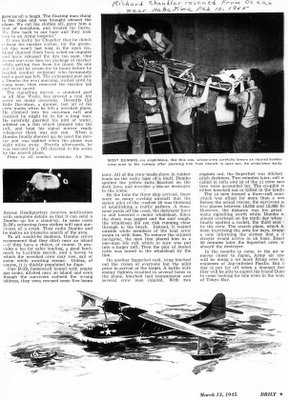 Here is a link to the Memorial Day Writer's Project at the Vietnam Memorial.
Here is a link to the Memorial Day Writer's Project at the Vietnam Memorial.http://www.memorialdaywritersproject.com/PoetsPages/Curley.htm
I read these three poems there:
- Screaming Like a Banshee
- Future Dust
- Lament for American Hands and Hearts
Screaming Like a Banshee
My wife screams like a banshee
to cover wailing with neutral sound
when my toddler Eamon fights her
and refuses to take a nap.
I hear Grandmom Curley screamed
like a banshee when the telegram arrived
from the War Department in 1945
to tell her the oldest, Frank, the one
who was supposed to be the Jesuit,
instead had been killed in action
when the Japanese ack-ack
turned his B-24 into a fireball
on his 39th mission over Haha Jima
in an ocean grave in the South Pacific.
Grandmom Curley screamed
like a banshee for weeks
until they hooked her up
and shot electricity through her brain
to cover wailing with neutral sound.
She never screamed like a banshee again.
Instead, she wailed so deep down for 20 years
because the hole in her heart was so vast,
laughter was no longer a planet in her galaxy
and the only way people would describe her was,
“She was never the same after Frank died in the Pacific.”
Future Dust
"I'll never look like that!"
I said to myself when we were offloaded
from the Lakeland Air Force Base
Officer Training School bus
and heard the upperclassmen
bark orders at us, the arriving class,
and saw the triple rings under their eyes.
Six weeks later, I looked like that
as I stood at the attention outside my room
on Saturday Morning Inspection
(as one upperclassman stood
outside my room looking at every detail
of my appearance for deviations
"Details will save your life!"
repeated by my teachers so often
it is forever burned into my mind,
and another ran over every detail in my room
from the folds in the mattress
to the spacing between my socks).
I broke after they left
to scan my demerits book
aware that so much depended
on my finally bringing those demerits down:
my graduation, the cohesion of my flight, honor,
the future of the United States of America.
And there it sat, like a turd
the inspector left behind
from his white-gloved hand:
"Future dust."
When the inspector returned
for questioning, I fired it right at him,
"What's 'future dust', Sir!?"
"I'd have had a perfect inspection
but for that demerit."
"Come over here, son."
he said in a thick Southern drawl.
He opened the blinds to let in the sun
and pointed at the air.
"What's that?" he said,
a thin grin opening on his face,
all the muscles in his future fighter pilot's body
preparing to press the red button on the joystick.
"Dust, Sir." I stated.
"Wrong, Officer Candidate Curley!
That's future dust!
In a few minutes it will land
on your desk and you failed to prevent it!
Therefore, you Sir, are guilty!
Guilty of letting down your flight!
Guilty of failing to prevent future dust!"
Three demerits. Good-bye!
As our teachers told us so many times,
they were preparing us for war.
Waging war has rules and surprises,
and surprises repeated often enough
become the rules of warfare.
Like future dust,
Or the future dust of a company
that fails to plan for the next bear market,
or the future dust of a family death,
or the future dust of the lack of preparation
for the next war and the deaths that will result,
or the dust of skyscrapers brought down
by fanatical jihadis,
or the future dust we will find
clogging the oxygen filters
of our interplanetary space ships.
So many years later,
I now know they were right.
We all must be eternally vigilant
to prevent future dust from landing,
if we are to have any chance at all
of a life in the space dust of the future.
Lament for American Hands and Hearts
A father will not be coming home tonight, or ever.
He was among 45 passengers
On a routine American commercial flight, Flight 93
When terrorists, Satan’s gift to the forces of evil,
Unjust war, pestilence, anger, murder, envy and all mortal
sin,
Slit the throats of some mothers who were stewardesses,
Bound them, sprayed mace at the men, who tried to help,
Herded them into the back of the plane,
Rushed the pilots, murdered them, and hijacked the plane.
Nevertheless, this Father Thomas Burnett
Calmly phoned his wife to say,
“I know we’re all going to die.
There’s three of us who are going to do something about
it.”
As Mark Bingham phoned his mother to say,
“I just want you to know I love you.”
They organized and planned in nanoseconds,
And acted with fearlessness in minutes.
They overpowered the murders before them,
Charged down the 33 rows and 290 feet of 767 aisle,
Kicked down the locked cockpit door,
And 3 unarmed average Americans
Subdued 4 armed, vile, and unclean Bin Laden terrorists
Because they overheard the terrorists plans to turn
The civilian airliner into a war missile
To kill more innocent civilians
In a new kind of war, the terrorists
Decided and stated for decades ago, had no rules.
The unarmed Americans fought bravely and well.
They pulverized the puny terrorists who,
Now stripped of their most advanced weapon…surprise…
Cowered beneath the first and fierce counterstrikes
Of many future ones from average Americans
Until we drive these terrorists back to the caves
From which they emerged,
As their caves become their tombs,
As we carry forth the spirit of those who fought and died
Above the Amish Pennsylvania countryside
Who put into practice the ancient Amish saying,
“Hands to work and hearts to God.”































